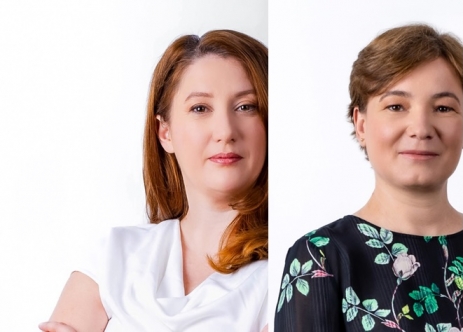
by Ionut Serban, Tuca Zbarcea & Asociatii
On 11 June 2020, the Romanian Government approved the Memorandum “General principles concerning the implementation of a support mechanism such as Contracts for Difference for the production of low-carbon electricity”. While a mere memorandum aimed at outlining an intention, the document is a milestone in the process of discussing a new support mechanism for investors in low-carbon technologies, initiated a few years ago.
The process has been naturally accelerated in the context of the 2018 European legislative package which sets new challenges in terms of clean energy. Facing the need to decommission the existing polluting capacities in the near and mid-term future, the Government looked at available support mechanisms to secure priority investments in new low-carbon technologies. The mechanism based on contracts for difference (“CfD”) is considered to be the result of an assessment of such available options carried out by the Ministry of Economy, Energy and Business Environment. Also, Romania seems encouraged to employ this mechanism by the positive experience of other European countries that have already implemented the CfD (the UK, Poland).
-
What is the CfD mechanism?
TheCfDis a support mechanism aimed at addressing the electricity market price risk, the regulatory risk and the inflation risk. It is intended to promote low-carbon electricity by increasing revenue predictability and decreasing the project risk profile and hurdle rate.
More specifically, as mentioned in the memorandum, the CfDis a market mechanism whereby producers’ revenues are stabilized at a fixed price level known as “striking price”. The striking price is therefore the final price per MWh to be obtained by an investor following the CfDapplication and may not exceed the “reserve price”. The latter is an administrative value, set on the basis of various assumptions related to the cost of various technologies so as to ensure a certain rate of return.
Generally, the striking price is determined following auctions conducted for granting the CfDsupport or viadirect negotiation, in case of unique capacities (such as the envisagedCernavodăNPP Units 3 and 4).
Thus,CfDproducers will obtain revenues by selling electricity on (competitive) markets. When / if the electricity price obtained on the market is below the striking price, they shall receive the balance up to the striking price from the Counterparty. On the contrary, when / if the electricity price obtained on the market exceeds the striking price, CfDproducers will pay to the Counterparty the amount exceeding the striking price. Therefore, the CfD does not guarantee the sale of electricity, instead it does guarantee a certain electricity price, namely the striking price. While the commercial risk associated to the sale of electricity remains with the producer, the striking price is aimed at allowing the recovery of the initial investment.
-
Where does the money to support the striking price come from?
From electricity end-consumers. The CfD mechanism includes a contribution imposed on all electricity end-consumers.
Also, any amounts exceeding the striking price paid by CfDproducers to the Counterparty are included in the Counterparty’s payment fund.
-
Which are the beneficiaries of the CfDmechanism?
The memorandum points to the following technologies as potential beneficiaries of the CfDsupport mechanism:
-
nuclear technology, for construction of new units;
-
technologies using renewable energy sources (“RES”);
-
carbon capture storage/ carbon capture and utilization (“CSC/CCU”) technologies related to the electricity generation units based on fossil fuel, when these technologies become commercially viable. The memorandum emphasizes that CfDshall be granted only for CSC/CCU plants/equipment according to the European guidelines on state aid.
The memorandum also refers to the fact that the possibility of including electricity storage technologies as potential beneficiaries of theCfDsupport mechanism (when such technologies become commercially viable) will be further considered.
-
How does the CfDwork?
-
CfD mechanism type
The intention is to implement a bidirectional CfDmechanism type, open to all low-carbon technologies (wind, solar, bioenergy, hydropower, nuclear energy, CSC/CCU technologies installed on fossil fuel production units).
-
CfD duration
TheCfDduration shall be aligned with the investment’s recovery duration.
-
Reference price
The reference price will be subject to both an ex ante and an ex post calculation. The ex-ante reference price will be annually established on the basis of average prices recorded on centralized markets in the previous years of delivery, during the implementation period.
The ex-post reference price calculation will be established based on the results recorded on the day ahead market. In order to avoid overcompensation, at the end of each financial year, a reconciliation process will be conducted based on the differences between the ex-ante and the ex-post reference price.
-
Adjustments to the striking price
In order to maintain the expected cost-effectiveness levels, adjustments to the striking price are permitted for changes in regulated costs (such as grid tariffs), as long as such adjustments are in line with the pre-negotiated contract clauses.
-
Costs and implementation control
In order to cap anticipated support payments, an annual financial budget is contemplated, which will be split according to technologies, as follows:
-
an annual estimated budget of EUR 125 mil. intended for RES projects;
-
an annual estimated budget of EUR 215 mil. intended for nuclear projects;
-
as regards the CSC/CCU plants/equipment and the electricity storage technologies, an annual budget will be determined at the time when the CSC/CCU plants become commercially viable.
-
Allocation methods
The allocation method is intended to be (i) auction-based for RES technologies; and (ii) customized/negotiated contract-based for unique projects.
-
Auction organizer
The auctions organizer is intended to be the grid operator, CNTEETranselectricaSA.
-
Selection criteria
The selection criteria will be “price per MWh”.
-
Compensation mechanism
In order to establish the striking prices within competitive auctions, apay-as-bidmechanism type (in Romanian “plata conform licitației”) is considered, which will be capped at the level of the reserve prices for each type of technology.
-
Reserve price
As mentioned, the reserve price is a mechanism to control the striking price and may not be exceeded. It considers the evolution of the new technologies prices and is aimed at ensuring a certain rate of return level considered satisfactory.
-
Does the CfDinvolve state aid assessment?
That should be a fair expectation. Either as a state aid framework scheme (for RES) or as a compatible state aid measure (for unique / individual projects) the EU Commission’s clearance may be required.
-
What is next?
TheCfDrequires a clear legal framework to regulate the actual implementation of the mechanism.
Following the approval of the memorandum by the Romanian Government, the Ministry of Economy, Energy and Business Environment envisages conducting the second phase of the study on the implementation of theCfDmechanism. The aim is to further define, among other things: the main legal framework and the secondary legislation required for the implementation of the support scheme, the framework agreement of theCfDmechanism, the detailed mechanism of support allocation for the new generation units, the eligibility criteria for the beneficiaries etc.
A long way seems to lie ahead before the CfD becomes reality and a strong political will is required to get through the challenges ahead. However, the clock is ticking on the European green deal and, with the memorandum, Romania should be one (minor) step closer to a new green horizon.



 June 28, 2020 07:23
June 28, 2020 07:23 










